

Broad River Capital Magazine


Commitment & performance for our clients.
MEET THE TEAM

JIM DAVIS PARTNER
jdavis@broadrivercapital.com (330) 718-3311

PATRICK JOHNSON PARTNER
pjohnson@broadrivercapital.com (919) 368-1414

KARL NELSON PARTNER
knelson@broadrivercapital.com (828) 713-0927
Broad River Capital leads its clients’ commercial real estate investments to success by placing capital into expertly-vetted assets and related instruments with outstanding prospects for profitability. We offer our expertise for the following services:
Acquisitions
The principals of Broad River Capital have worked on both sides of the negotiating table through our careers. We understand the factors that can make an investment in a multi-family, retail, or industrial property as successful as possible. Our process puts your investment interests front and center as we work alongside you, from defining investment criteria all the way through closing.
Dispositions
Our approach is tailored to each and every client engagement. Because no asset is identical, we believe its disposition process should be just as unique as the investment offering itself. The principals of Broad River Capital apply our knowledge, skills, and experience to yield favorable results for each assignment that we take on.
Different by Design.
BRC acts as a boutique investment firm, but is backed by NAI Beverly-Hanks, giving us a wealth of resources that other firms don’t have.
The national affiliation with NAI Global allows us broad access to market insights, corporate or tenant connections, and the ability to introduce you to relationships nationally and internationally to benefit your success.
Founded in 1976, Beverly-Hanks has grown to become the largest full-service commercial brokerage firm in Western North Carolina. In 2008, Bevelrly-Hanks selected an international partner to extend the services they were able to offer clients when providing brokerage services. They chose NAI Global because it is the premier network of independent commercial real estate firms, and one of the largest commercial real estate service providers in the world. NAI Global supports a network of 7,000 professionals and 400 offices worldwide.
NAI Beverly-Hanks’ roots are local and deep, which allows them to develop lasting, long-term relationships with their clients. In every aspect of their business, they represent the finest levels of service and professionalism, as defined by the quality of their clients, the projects they undertake, and most of all, the loyalty and integrity of the staff. The company has a solid foundation of top-level local professionals with diversified skill sets, offering on average 15+ years of commercial real estate experience.
Their affiliations with NAI Global, Society of Industrial & Office Realtors® (SIOR), Certified Commercial Investment Members (CCIM), and the International Council of Shopping Centers (ICSC) enable them to extend their services to companies and investors throughout the nation, as well as internationally. The power of this direct and purposeful contact with other markets allows them to assist their clients with quicker, more efficient acquisition and disposition of real estate.
We are honored to be part of NAI Beverly-Hanks and have strong, local roots yet global connections. The freedom and integrity to do what’s right for you, always.
We’re local, we’re
global.
NAI Global is strategic and innovative.
NAI Global is an international real estate services organization with 93 international offices, and the institutional strength of one of the world’s leading property investment companies.
The national affiliation with NAI Global allows us broad access to market insights, corporate or tenant connections, and the ability to introduce you to relationships nationally and internationally to benefit your success.
NAI Global offices
Optimizing Exit Strategies and Enhancing Resale Value in Single-Tenant Net-Leased Properties

By: Karl Nelson
...Several critical factors contribute to the high resale value of STNL properties. Long-term leases with high-credit tenants, such as Lowe’s or corporate-owned McDonald’s, often achieve premium resale values due to their lower perceived risk and stable income.
Planning an effective exit strategy is essential for maximizing returns on single-tenant net-leased (STNL) properties. Proper timing and strategy can significantly enhance profitability. For instance, selling a property with a 15-year lease term remaining 10 years before it expires can be highly advantageous. This approach leverages the property’s remaining lease term to attract buyers seeking stable income, often resulting in cap rates as low as 5.5%.
Conversely, properties with less than three to five years remaining on the lease may need to be priced lower, reflecting cap rates closer to 7-9%, to account for higher vacancy and renegotiation risks. Several critical factors contribute to the high resale value of STNL properties. Long-term leases with high-credit tenants, such as Lowe’s or corporateowned McDonald’s, often achieve premium resale values due to their lower perceived risk and stable income. For example, a Lowe’s property with 15 years remaining on the lease might sell at a 5.45% cap rate, translating to a $3.67 million sale price for a property generating $200,000 in annual rent. In contrast, a similar property with only five years left might sell at a 6.5% cap rate, or $3.08 million, highlighting the significant impact of lease duration on value. Additionally, properties in vibrant, high-traffic locations can command even higher prices, further boosting profitability.
Investors can also navigate potential challenges in the resale process with strategic planning. Changes in tenant performance or credit rating can impact property value, but proactive measures can mitigate these risks. For example, a downgrade from BBB to BB might increase cap rates and reduce sale prices, but regular monitoring and timely responses can help maintain value. Additionally, market conditions like rising interest rates can affect buyer demand and pricing. A 1% interest rate hike might increase cap rates by 0.5-1%, reducing property values by 8-10%.
To optimize outcomes, investors should develop a comprehensive exit strategy early, including regular market analysis and tenant performance monitoring. This proactive approach ensures flexibility and readiness to adjust plans based on market dynamics and tenant conditions, ultimately enhancing investment returns.
Market Insights: Recent Single-Tenant
Net Lease Investment Property

3605 M L KING JR BLVD | NEW BERN, NC
SALE PRICE: $ $3,374,000 | CAP RATE: 6.37%
SALE DATE: May 23, 2024

601 VILLAGE WALK DR | HOLLY SPRINGS, NC
SALE PRICE: $2,500,000 | CAP RATE: 5.00%
SALE DATE: MARCH 19, 2024
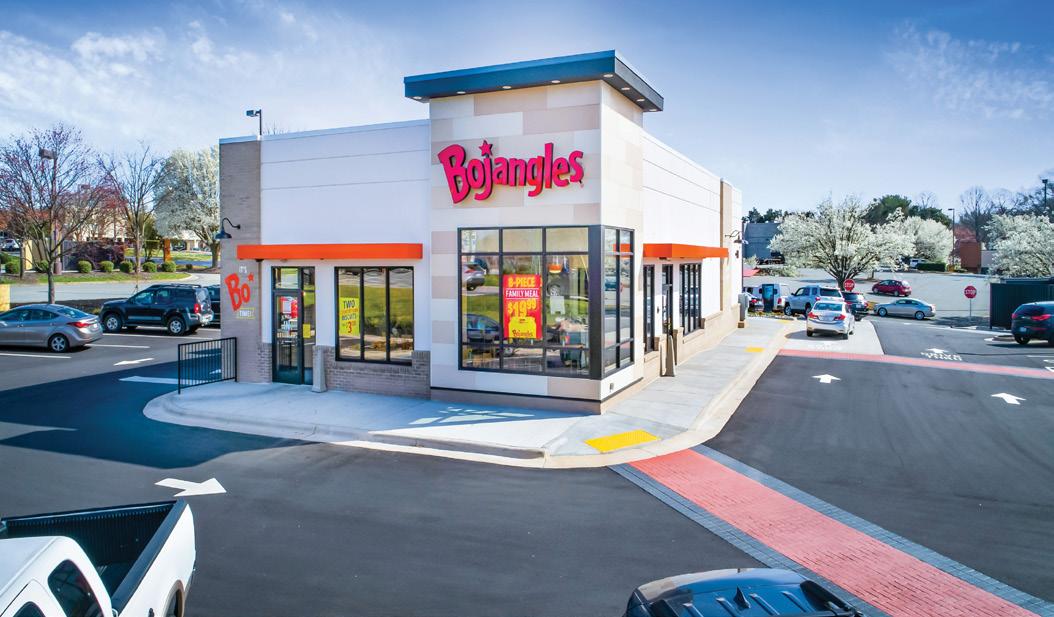
108 ROWAN ST | FAYETTEVILLE, NC
SALE PRICE: $1,975,000 | CAP RATE: 5.32%
SALE DATE: MAY 20, 2024
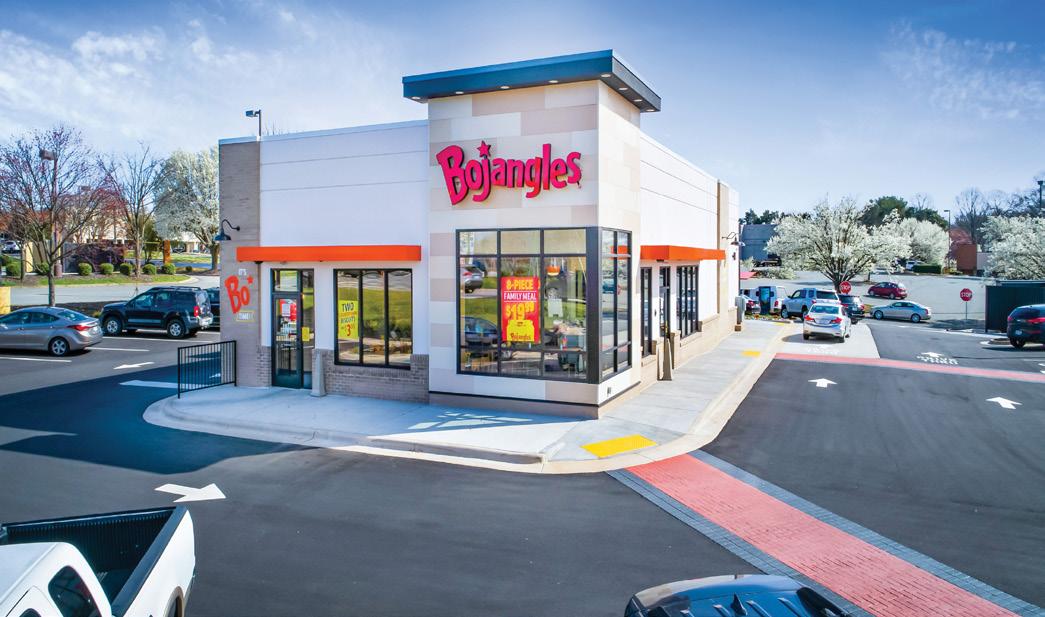
216 MAIN ST | ROCKWELL, NC
SALE PRICE: $2,770,500 | CAP RATE: 5.99%
SALE DATE: JUNE 26, 2024
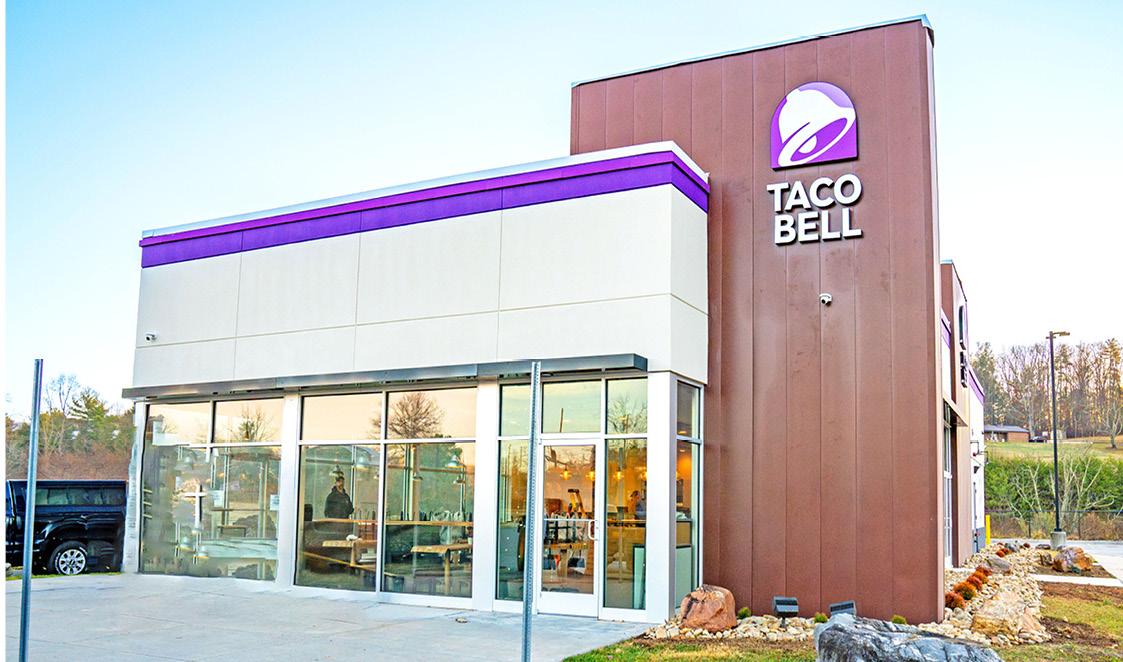
11 BETT STROUD BLVD | WEAVERVILLE, NC
SALE PRICE: $2,400,000 | CAP RATE: 5.33%
SALE DATE: MARCH 14, 2024

517 HICKORY RIDGE DR | GREENSBORO, NC
SALE PRICE: $1,625,000 | CAP RATE: 5.50%
SALE DATE: JULY 10, 2024
We here at Broad River Capital specialize in single-tenant net lease investment property sales, and our clients rely on us for up-to-date market information. Above are six recent sales of comparable properties that provide insight into current market trends; we continuously monitor the market to keep our clients informed. If you have any questions or would like to discuss the market further, please don’t hesitate to contact us. We look forward to being a resource to you.
The Power of Off-Market Deals
A Case Study

By: Karl Nelson
The Strategic Sale of an Off-Market Panera Bread Property
Challenge
We were contacted by an owner who owned a single-tenant net leased property, tenanted by a Panera Bread franchisee, seeking a discreet sale avoiding the open market, to prevent any unwanted attention or speculation. This posed a distinctive challenge since properties like these, especially those under long-term leases, generally gain from widespread market exposure to achieve maximum sale value. Our mission was to adeptly balance the need for privacy with the imperative of securing the most advantageous deal for the property owner.
Action
To navigate this challenge, we utilized our proprietary database, a comprehensive resource of potential investors with a keen interest in single-tenant net leased properties. This allowed us to meticulously target and approach investors who met the specific criteria for this off-market opportunity. Our strategy focused on reaching out to qualified 1031 exchange buyers and/or their representatives, known for their ability to make swift and decisive investments. By employing a direct and selective marketing approach, we ensured that only the most relevant and serious buyers were engaged, thus honoring the seller’s request for confidentiality while efficiently moving the sale process forward.
Results
Our adept handling of the off-market sale process yielded impressive results, marked by efficiency and client satisfaction:
• The property was listed off-market, and within just 32 days, we successfully secured a letter of intent from a suitable 1031 exchange cash buyer
• Following the letter of intent and subsequent negotiations, the property went under contract in 6 days
• The closing of the sale was completed 45 days after going under contract
• The sale concluded with a cap rate of 5.41%
Industrial Real Estate: 2024 Outlook

U.S. Industrial Market
The U.S. industrial market is set to find its footing in 2024 after a period of dynamic change and adaptation. According to CBRE Research, the market will stabilize with net absorption levels similar to 2023 and a moderate rent growth of 8%. Here’s a closer look at what to expect in the industrial sector this year.
Market Stability and Construction
Construction deliveries are expected to decrease significantly by midyear, finishing at approximately half of 2023’s total. This reduction will cause the overall vacancy rate to rise to around the 10-year average of 5.0%. However, by the second half of the year, we can anticipate a slight decrease in the vacancy rate. New development activity will remain subdued due to several factors, including tight lending conditions, economic uncertainty, and an oversupply of large warehouse and distribution facilities in certain markets.
Leasing Activity
Annual leasing activity is projected to hover around 750 million sq. ft. for the foreseeable future. While lease renewals will dominate the first half of 2024, there may be an uptick in new leasing activity in the latter half of the year if economic conditions improve.
Key Demand Drivers
Three primary demand drivers will shape occupier decision-making in 2024: Supply Chain Resiliency: Companies will focus on strengthening their supply chains by diversifying import locations, onshoring or nearshoring manufacturing operations, and adequately staffing their distribution centers. E-commerce Growth: The e-commerce sector will continue its steady growth, leading retailers and suppliers to expand their warehouse and distribution space, particularly in the U.S. South.
Population Growth: Growing population centers will drive demand for industrial spaces, especially in regions experiencing demographic growth.
Regional Highlights
Markets with well-trained, affordable, and available labor pools will be in high demand. Some of these markets include Memphis, the PA I-78/81 Corridor, Indianapolis, Louisville, the Inland Empire, and Savannah.
Sustainability Focus
With pandemic-driven demand receding, occupiers will increasingly focus on energy-saving measures for their facilities. There will be a growing demand for sustainable energy sources like solar and wind power, with commercial use of solar panels expected to grow by 13% in 2024, according to the Solar Energy Industries Association. Additionally, there will be an increased investment in automation and artificial intelligence for order picking and inventory control. First-generation spaces equipped with these amenities will be highly sought after.
Conclusion
In summary, the U.S. industrial market is expected to stabilize in 2024, with moderate growth and a focus on sustainability and resilience. As companies adapt to evolving market conditions, those that prioritize supply chain optimization, e-commerce expansion, and sustainable practices will be well-positioned to succeed in this changing landscape.

Asheville Industrial Market
The industrial real estate landscape in Asheville, North Carolina, is experiencing notable shifts and growth, making it an area of interest for investors, businesses, and developers alike. With a vacancy rate of 5.5%, an increase of 1.5% over the past year, Asheville’s industrial market is reflecting trends both nationally and locally. Here’s a closer look at the current state and future prospects of Asheville’s industrial sector.
Economic Resilience and Recovery
Asheville has demonstrated remarkable resilience in its economic recovery, having regained all the jobs lost during the initial months of the pandemic. The metro area experienced a significant decline, shedding nearly 35,000 jobs, or about 18% of its total labor force, in the aftermath of the pandemic’s onset. Since then, total employment has surpassed pre-pandemic levels seen in February 2020. Key sectors driving job growth in Asheville include professional and business services, leisure and hospitality, and education and health services. These industries have continued to see outsized gains compared to others in the region, contributing to the area’s economic recovery.
Market Segmentation and Trends
In Asheville’s industrial market, logistics space remains the largest subtype, accounting for 22.0 million SF. This is followed by 9.8 million SF of specialized space and 6.4 million SF of flex space. The combined total of 38.2 million SF places Asheville as a typically sized industrial market, offering a diverse range of industrial property types to meet varying needs.
Rent and Price Trends
Rents in Asheville’s industrial market have been on an upward trajectory, currently averaging around $9.50/SF. This represents a significant 7.2% increase from a year ago and a cumulative increase of 31.3% over the past three years. Despite these increases, Asheville remains a structurally inexpensive market, with average rents well below the national average of $12.00/SF.
Sales Activity and Investment Trends
Sales activity in Asheville’s industrial market has been robust, with 52 sales recorded in the past year. These sales have averaged $64/SF, with an estimated market value of $72/SF. The most frequent transactions have involved logistics space, accounting for 27 sales, which aligns with the dominant subtype in Asheville’s industrial market. Over the past three years, the market has seen a total of 168 sales, amounting to approximately $376 million in transactions. This period has also seen an increase in the market cap rate to 9.0%, surpassing the trailing three-year average of 7.9%. These trends indicate growing investor interest and confidence in Asheville’s industrial sector.
Economic and Demographic Trends
The Asheville market continues to be driven by the travel and leisure industry, benefiting from postpandemic demographic trends. As consumers prioritize experiences and discretionary spending, tertiary markets like Asheville have experienced higher-than-average growth and increased demand due to the region’s affordability, natural amenities, and accessibility.
The median household income in Asheville has grown by 29.2% over the past three years, outpacing national trends. Additionally, population growth in Asheville has continued to outpace national trends, driven by in-migration to the Sun Belt region. With employment growth at 2.4%, outpacing national trends, both economic and population growth are expected to remain positive in the near term, despite economic uncertainty.
Conclusion
In conclusion, Asheville’s industrial market presents a mix of growth opportunities and favorable conditions for investors and businesses alike. With increasing rents, ongoing construction, robust sales activity, and positive economic and demographic indicators, Asheville’s industrial sector is poised for continued growth and development. As the market continues to evolve, stakeholders should keep an eye on these trends to capitalize on emerging opportunities in this dynamic market.
By: Jim Davis
About Asheville MSA
Buncombe, Henderson, Haywood, and Madison Counties
476,072
Average Household Income $81,132 Rankings
Asheville ranked #3 on “The South’s Best Cities” Southernliving.com, 2023
Asheville ranked #10 on the list of “Best Food Destinations in the U.S.” — Tripadvisor.com, 2023 Asheville named one of the Top 50 Small Cities to Start a Business WalletHub.com, 2023

We know Western North Carolina (and beyond).
Retail Stats North Carolina Market
Multi-Family Stats
North Carolina Market
North Carolina Market
Industrial Stats North Carolina Market
Retail Stats National Market
Multi-Family Stats National Market
Office Stats National Market
Industrial Stats National Market
Opportunities in the Carolinas to Utilize Inland Shipping Ports

By:Jim Davis

As global supply chains become more complex, efficient transportation is essential. The Carolinas, with their strategic location and growing infrastructure, present opportunities for inland shipping ports, which offer cost savings, environmental benefits, and improved logistics.
The Carolinas Boast Several Prominent Inland Ports
1. Inland Port Greer (South Carolina): Opened in 2013, Inland Port Greer connects the Upstate region to the Port of Charleston via Norfolk Southern rail service. It has been a catalyst for economic growth, significantly reducing transportation costs and time for businesses in the region.
2. Inland Port Dillon (South Carolina): Operational since 2018, Inland Port Dillon serves the Pee Dee region and enhances connectivity the Port of Charleston. It supports industries such as agriculture, manufacturing, and retail by providing efficient logistics solutions.
3. Charlotte Inland Port: The Charlotte inland port is a 20-acre dry port site located along the CSX rail lines near the intersection of NC 16 and I-85. It serves as a distribution point for intermodal containers connecting the I-85 and I-77 corridors to the CSX rail line and the Port of Wilmington.
Benefits of Utilizing Inland Ports
The strategic utilization of inland ports offers several advantages that can transform the logistics landscape in the Carolinas:
1. Cost Efficiency: Inland ports reduce transportation costs by minimizing the distance trucks must travel to and from coastal ports. This results in lower fuel expenses, reduced wear and tear on vehicles, and fewer emissions.
2. Environmental Impact: By shifting more cargo onto rail, inland ports help decrease the number of trucks on the road, leading to lower greenhouse gas emissions and less congestion on highways. This contributes to a more sustainable and eco-friendly transportation system.
3. Enhanced Supply Chain Reliability: Inland ports provide an additional layer of reliability to supply chains. With the ability to handle large volumes of cargo efficiently, they help mitigate the risks associated with disruptions at coastal ports, such as weather events or labor strikes.
4. Economic Growth: The presence of inland ports stimulates local economies by attracting businesses that rely on efficient logistics. This can lead to job creation, increased investment, and overall economic development in the surrounding areas.
Future Prospects and Development
The future of inland ports in the Carolinas looks promising, with several opportunities for expansion and development:
1. Public-Private Partnerships: Collaborative efforts between government entities and private companies can drive the development of new inland ports and the enhancement of existing ones. Such partnerships can leverage resources and expertise to create world-class logistics hubs.
2. Technological Advancements: Incorporating advanced technologies, such as automated handling systems, real-time tracking, and data analytics, can further improve the efficiency and reliability of inland ports. These innovations can streamline operations and provide valuable insights for optimizing supply chains.
3. Infrastructure Investments: Continued investment in transportation infrastructure, including rail networks and roadways connecting inland ports to coastal ports and major markets, is essential. Improved infrastructure will enhance connectivity and facilitate the smooth flow of goods.
4. Regional Collaboration: The Carolinas can benefit from regional collaboration, working together to promote the advantages of inland ports and attract global businesses. By positioning the region as a logistics hub, the Carolinas can capture a larger share of global trade.
Conclusion
Inland shipping ports represent a vital component of the Carolina’s logistics infrastructure, offering numerous opportunities for cost savings, environmental sustainability, and economic growth. As the region continues to invest in and develop these facilities, inland ports will play an increasingly important role in enhancing the efficiency and resilience of supply chains. By capitalizing on these opportunities, the Carolinas can solidify their position as a key player in global trade and logistics.
Why work with Broad River Capital?

The principals of Broad River Capital understand that there are a myriad of investment firms locally and globally in which clients can place their trust. We pride ourself on a unique intersection of expertise and experience that can benefit its projects meaningfully, both in the short term and the long term.
A world of support with a singular focus: You.
Relationships
Through decades of experience in all corners of the country and the commercial real estate industry, the partners at Broad River Capital have developed meaningful relationships near and far.
Regular communication with active investors aids us in identifying off-market deals on an ongoing basis. Depending on an investor’s criteria, we can survey our network of owners to identify investment opportunities that may be of interest to both potential buyers and sellers before they go to the broader market. This allows for a discrete and expedient transaction processes.
Similarly, if a client is looking to sell an asset or related debt instrument, we have access to a vast network of local, regional, national, and global investors looking to place capital in real estate assets. We maintain a thorough understanding of each firm’s and individual investor’s parameters and identify potential buyers quickly and efficiently.
Asset Type Expertise
Our principals have meaningful experience in commercial real estate investments and developments of all kinds. More specifically, we specialize in retail, multi-family, hospitality, and industrial investments throughout the region and nation. Thanks to our years of experience in these sectors, we understand the difference between good and excellent investment opportunities, not to mention the potential pitfalls investors should be aware of. This expertise is of particular value when we examine a potential investment on behalf of our clients or consider what prospective investors will flag as potential challenges in a due diligence process.
Team Approach
Drawing on each partner’s background, we are able to bring comprehensive knowledge of commercial real estate investments to each engagement. Having worked together for several years or longer, each principal has access to the knowledge of his team’s collective expertise. This approach benefits our clients by way of access to knowledge of not just one type of investment, but an array of asset types. Additionally, we have worked in many major markets of the United States, allowing us to rely on each other’s knowledge different regions, markets, and sub-markets.
Client Focus
When we take on any project, we approach the assignment as a team with our client’s success as the singular goal. We maintain an unwavering focus on the specific needs of our client. When our clients are successful, we are successful.
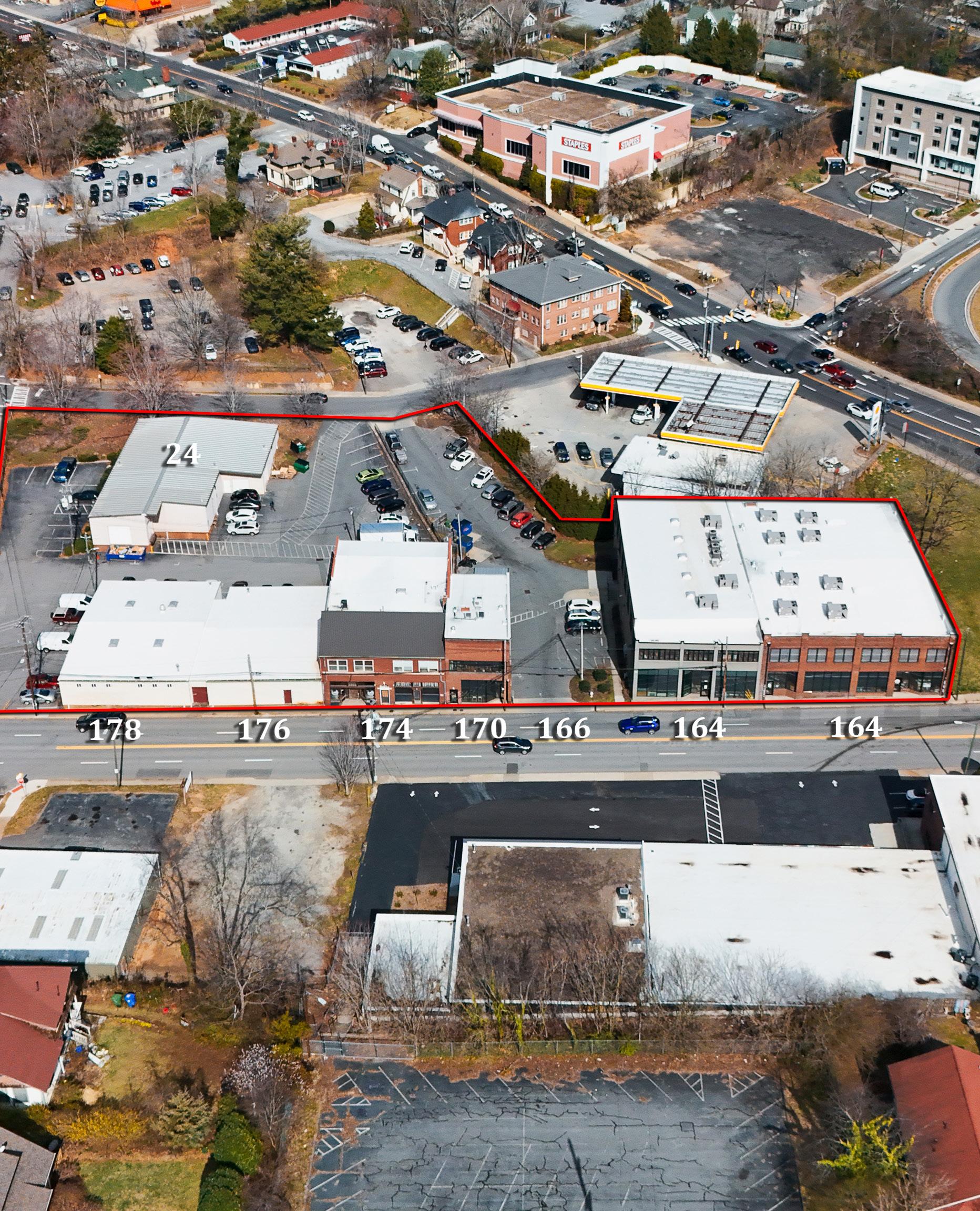
Notable Transaction Horse Shoe Mountain
Horse Shoe, NC | Closed for $15,000,000

Karl Nelson teamed up with a fellow Allen Tate agent, Billy Harris, to sell this 644 acre tract in Henderson County. One of the most challenging aspects of this sale was the property’s sheer size and diversity, - managing a property of this great size requires a nuanced understanding of its potential uses, zoning regulations, and the intricacies of large-scale transactions. Together, Karl and Billy conducted an in-depth analysis to segment the property, highlighting its best uses for different buyers.
Recent Notable Transactions

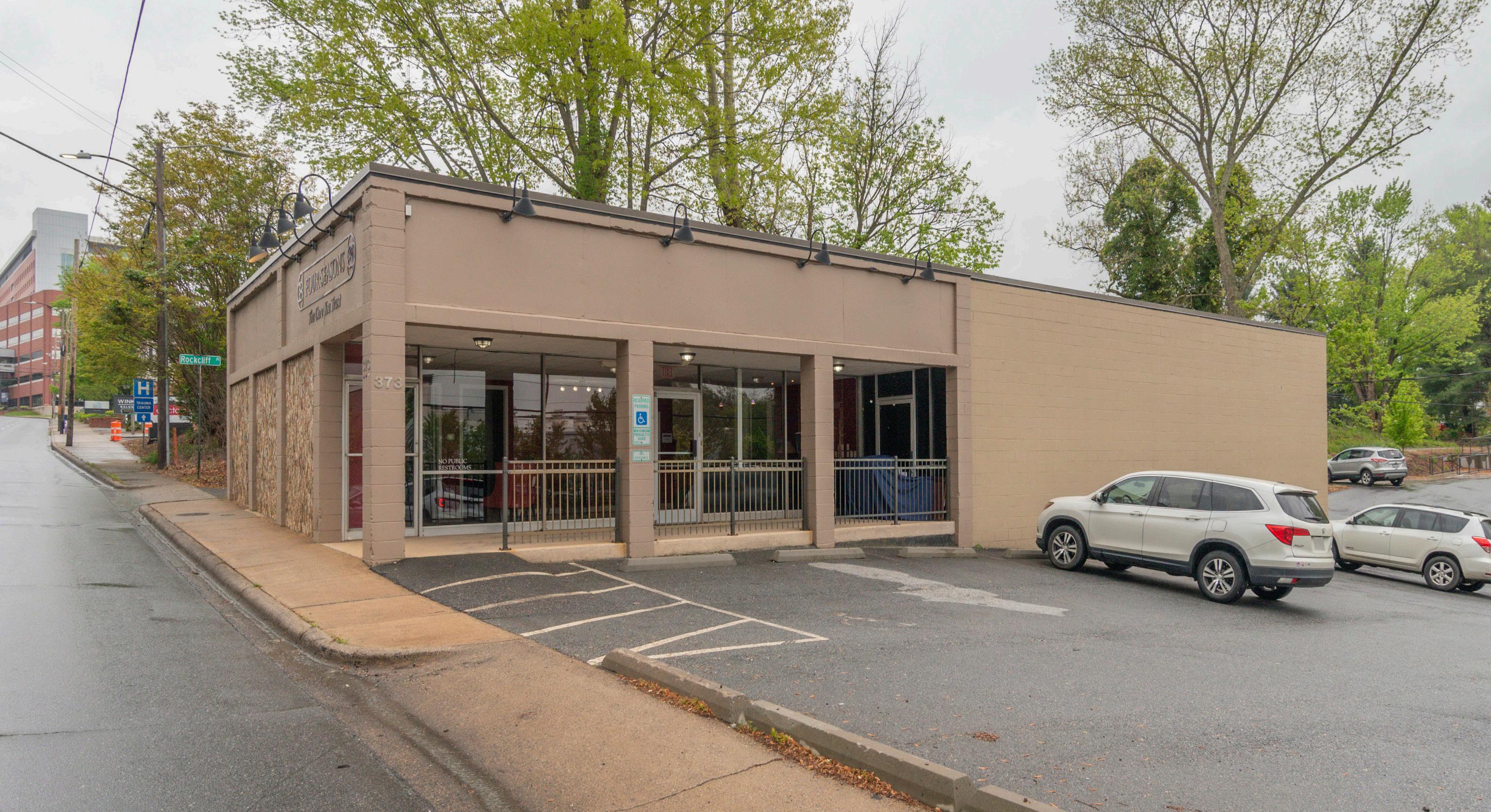
220 Merrimon Ave, Weaverville, NC | Closed for $5,800,000
373 Biltmore Avenue, Asheville, NC | Closed for $910,000

323 Broadway Street, Asheville, NC | Closed for $2,100,000

225 N Main Street, Hendersonville, NC | Closed for $485,000
Asheville Apartment Pipeline Hits Record High

By: Alvin Abston | Costar Market Analyst
The apartment pipeline in Asheville, North Carolina, is at a record high as developers look to capitalize on demand in the booming market.

Nearly 3,000 units are underway in Asheville, according to CoStar data. For context, in the 10 years leading up to 2020, Asheville averaged around 1,200 units under construction. That number jumped over 45% in just the past four years with 1,700 units under construction on average.
Developers have focused on the Central Asheville area, which has received most of the market’s new inventory since 2020. The market, which includes Downtown and West Asheville, has expanded by around 3,000 units over the past three years alone, growing by about 13% over that period. For context, no other submarket in Asheville has added more than 1,000 units since 2020.
Groundbreakings surged last year with nearly 1,300 units started. This marks only the third time over 1,200 new units broke ground in a year, which points to a packed pipeline for the next six to 12 months.
The increase in construction starts comes as demand for apartment units in the Southeast has surged since 2020 as new residents have flocked to the region in search of affordability and employment opportunities. While large metropolitan areas such as Atlanta and Charlotte, North Carolina, have garnered an outsize share of demand and supply in recent years, smaller tertiary markets like Asheville have also benefited from these recent demographic trends, such as population growth that has continued to outpace the national average.
CoStar’s forecast for Asheville calls for just over 800 units completed this year and another nearly 1,600 units completed in 2025. As this new supply continues to come on line, vacancy is projected to peak at around 11.5% in the first half of 2025.
The start of new apartment projects has slumped this year, though, and as a result, supply-side pressure is expected to taper off dramatically after the coming year. Much of this slowdown in groundbreakings can be attributed to stubbornly high construction costs and interest rates that have continued to hinder developers’ ability to make new apartment projects “pencil out.”
Given these projections and macroeconomic factors, a slowdown in completions is supported after next year, leading to more stable fundamentals in the second half of 2025.

When it comes to local commercial real estate, experience matters.


